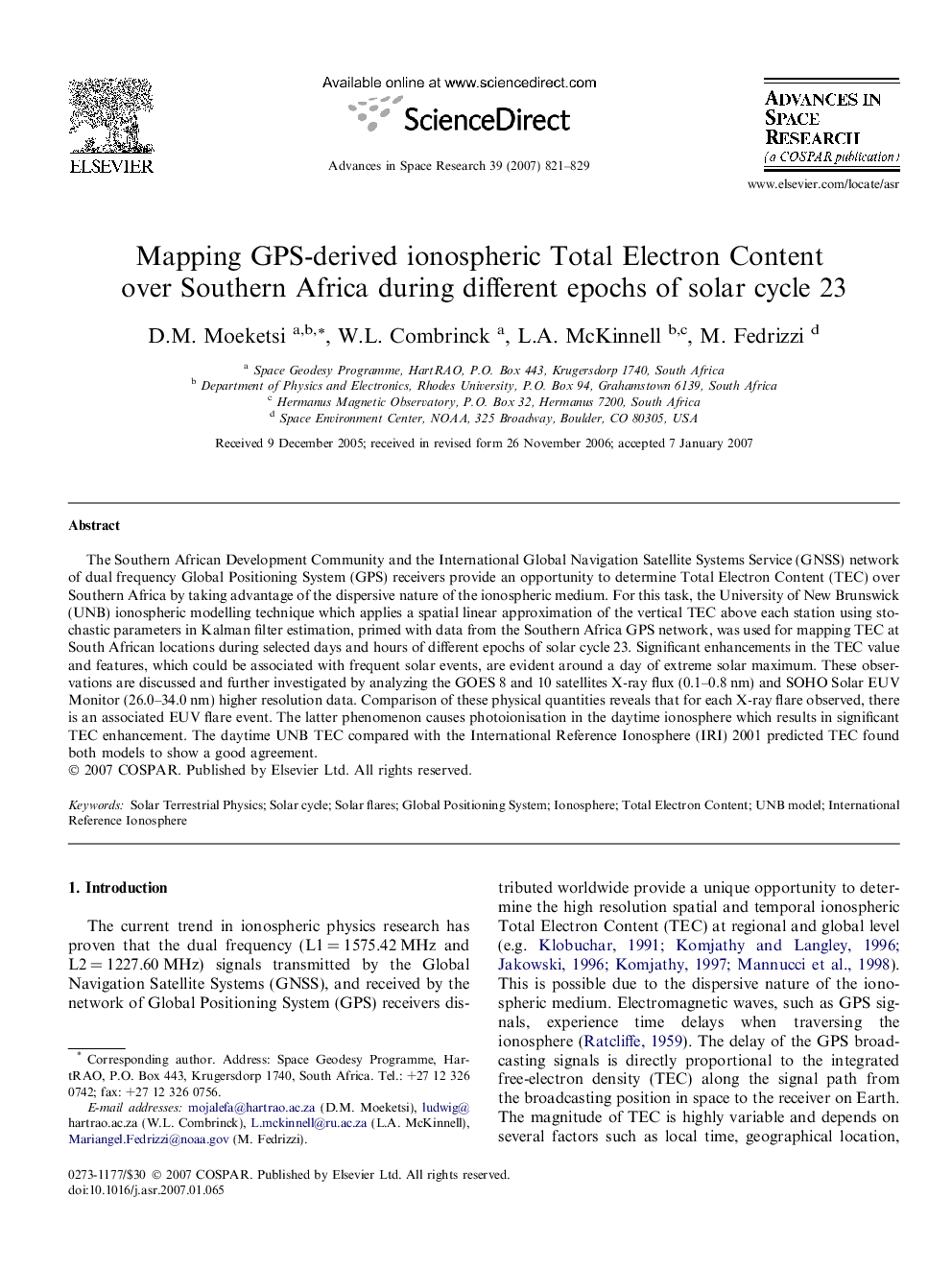| Article ID | Journal | Published Year | Pages | File Type |
|---|---|---|---|---|
| 1768375 | Advances in Space Research | 2007 | 9 Pages |
The Southern African Development Community and the International Global Navigation Satellite Systems Service (GNSS) network of dual frequency Global Positioning System (GPS) receivers provide an opportunity to determine Total Electron Content (TEC) over Southern Africa by taking advantage of the dispersive nature of the ionospheric medium. For this task, the University of New Brunswick (UNB) ionospheric modelling technique which applies a spatial linear approximation of the vertical TEC above each station using stochastic parameters in Kalman filter estimation, primed with data from the Southern Africa GPS network, was used for mapping TEC at South African locations during selected days and hours of different epochs of solar cycle 23. Significant enhancements in the TEC value and features, which could be associated with frequent solar events, are evident around a day of extreme solar maximum. These observations are discussed and further investigated by analyzing the GOES 8 and 10 satellites X-ray flux (0.1–0.8 nm) and SOHO Solar EUV Monitor (26.0–34.0 nm) higher resolution data. Comparison of these physical quantities reveals that for each X-ray flare observed, there is an associated EUV flare event. The latter phenomenon causes photoionisation in the daytime ionosphere which results in significant TEC enhancement. The daytime UNB TEC compared with the International Reference Ionosphere (IRI) 2001 predicted TEC found both models to show a good agreement.
